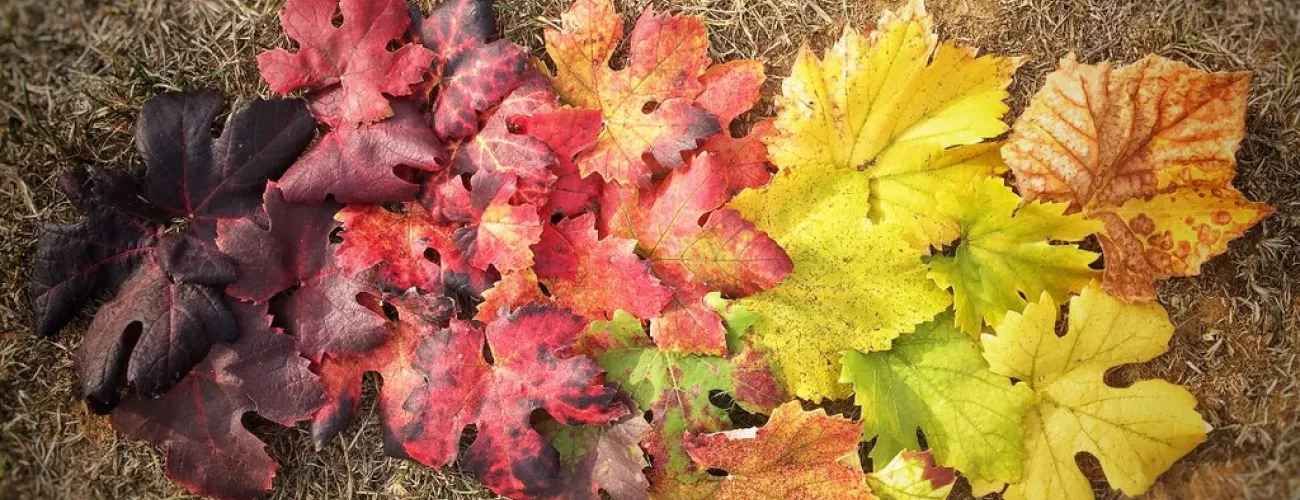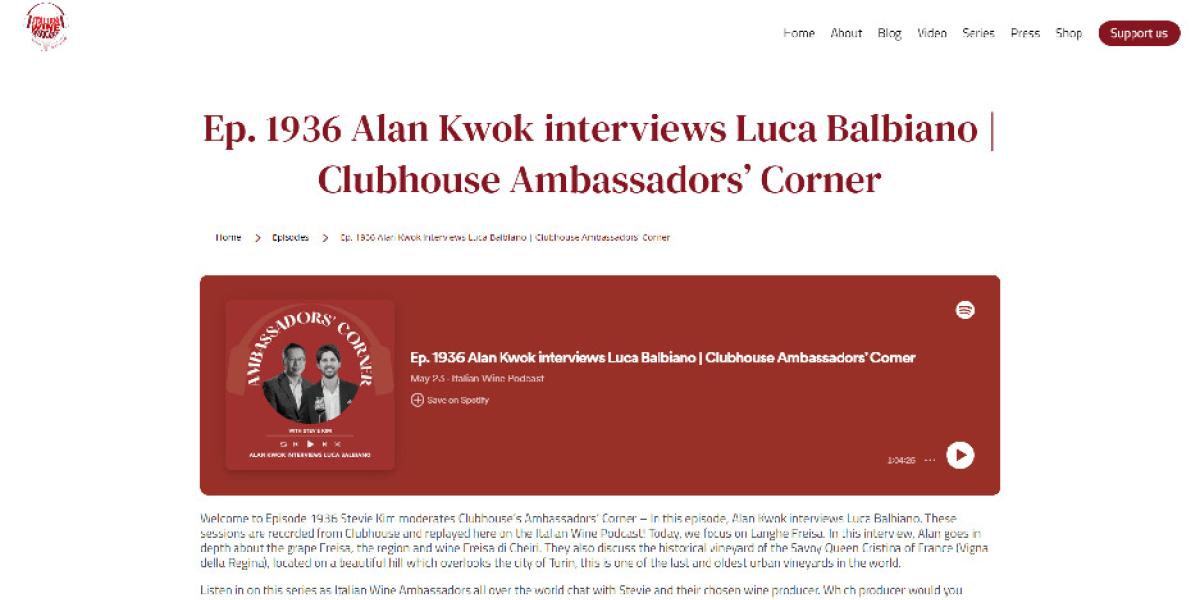The Urban Vineyards Association Is Reviving History, One Vine at a Time

Published on WineEnthusiast the
Imagine visiting a vineyard on the roof of an old factory or wandering through the streets of Paris and stumbling upon rows of vines. Sounds unlikely, right? But these scenarios actually do exist in cities around the globe.
Through locations in cities like Barcelona, Venice and New York, the Urban Vineyards Association (UVA) is on a mission to preserve regional cultural history through the revitalization and development of urban vineyards. Many of these projects aim to restore ancient agricultural plots, but it’s not just about looking to the past. The UVA believes urban vineyards can help cities flourish economically and culturally while promoting sustainable tourism. Here’s how and why.
From Turin to the World
Luca Balbiano, the founder of the UVA, is a third-generation vintner at Cantine Balbiano, in Andezeno, Italy, a small town outside of Turin. His family has been making wine in the region for over 80 years and he has an intimate understanding of the area and its history. So when the Italian Ministry of Culture wanted to restore a vineyard in the heart of Turin in 2002, it tapped Balbiano for his expertise.
The vineyard in question is part of the Villa della Regina complex, a 17th-century royal residence that became a UNESCO Heritage Site in 1997. The complex was badly damaged from WWII bombings and part of the restoration work included replanting its vineyards. But the plan went beyond landscaping: Balbiano thought that it should produce wine again. Not only was this important from an oenological standpoint, but it would be culturally and historically significant, too. “It would be the renaissance of the only vineyard in the capital city of one of the most influential wine regions in the world, Piemonte,” he says.
Using old documents, photographs and even paintings as resources, Balbiano and his team replicated the structure of the two-and-a-half acre site. Upon clearing the land of unruly trees and shrubs, they uncovered old vines and sent them to the University of Turin for DNA analysis. They turned out to be Freisa, one of the oldest known varieties in the region. To maintain historical integrity, Balbiano opted to replant solely with Freisa, a relative of Nebbiolo known for high acidity and tannins, plus red fruit notes.
In 2009, Villa della Regina released its first vintage. By 2011, it reached another important milestone when Balbiano successfully campaigned for the release of the first Freisa di Chieri DOC.
As Balbiano cared for the vineyard, he wondered how many others were revitalizing vineyards like this in the world. He began to uncover similar plots throughout Europe and in 2018, the Urban Vineyards Association was born.
Today there are 12 UVA members throughout Europe and the U.S. They share a common vision: to protect and revitalize urban vineyards and all that they represent from a historical and agricultural perspective, while at the same time, using them to help promote a city’s culture for both locals and tourists. “An urban vineyard can be, at the same time, the most historical and the most modern thing you can imagine,” says Balbiano. “It is the perfect spot for enjoying the beauty, art and culture of a city in an unexpected way.”

Preserving History
Revitalization plays a key role in the UVA’s work. Although many of these vineyards are tiny (usually less than three acres) bigger wine producers, such as Italy’s Santa Margherita, have also joined the UVA. In 2019, Santa Margherita started to restore the grounds of San Francesco della Vigna, a 13th-century Venetian monastery home to seven elderly monks and the oldest vineyard in the city.
The project was comprehensive. Working with the monks, who have deep knowledge of the site, Santa Margherita replanted the vineyard with Malvasia, which has been cultivated since the middle ages, and introduced cuttings of Glera, a variety Santa Margherita considers one of its specialties. They plan to release a sparkling wine made from those grapes soon. The initial production is small (just 900 bottles) since Santa Margherita believes producing wine is almost beside the point; the story of the monastery, its viticultural history and preservation is more important. “A place like San Francesco della Vigna can easily be lost,” says Santa Margherita’s fourth-generation owner, Alessandro Marzotto. “And if we lose something like this, we can never get it back.”
The Rise of Eco-Tourism
On a global scale, urban vineyards might be the new frontier of sustainable tourism. “Vineyards create a natural environment within the urban landscape and could actually highlight another way to use land,” says Sandra Carvao of the United Nations World Tourism Organization, which has been focusing on wine tourism since it threads together a region’s urban and rural areas, culture and gastronomy. In addition, Carvao believes vineyards offer opportunities talk about sustainability.
Carvao notes a vineyard’s proximity to other urban pursuits is a good way to reach people who might not necessarily be interested in wine but might be willing to learn if it’s accessible. “For us, the important thing is that either local or national governments see the value of wine tourism and the value of including it in the overall development of the region,” she says. “Often, it’s seen as a niche sector. I always say it’s important to take wine tourism out of the wineries.” As the wine industry struggles to connect with new drinkers, urban vineyards might be one solution.

Innovating for the Future
While preserving the past is important, the UVA is not only concerned with conservation; it sees urban vineyards as a site of innovation. City governments are catching on. They understand that green spaces promote the well-being of its residents and vineyards bring variety into the landscape.
The city of Barcelona helped to fund the restoration of Can Calopa de Dalt, a 16th-century farmhouse where the socially minded collective L’Olivera makes wine.
“When we talk about urban agriculture, it is not so much about the output of what’s grown there, but rather it’s about the increased quality of life and sense of community,” says Alvaro Porro Gonzàlez, Barcelona’s Commissioner for Social Economy, Local Development and Food Policy. “It could create a lot of different positive outcomes that are not necessarily related to the provision of food.” Can Calopa de Dalt practices what Gonzàlez calls “social agriculture,” by hiring people with special needs to help them gain work experience and earn a small income.

In New York City, Qiana Mickie, director of the newly created Office of Urban Agriculture, sees a lot of potential for urban vineyards to intersect with her work, which includes increasing access to fresh food, minimizing the city’s contribution to the climate crisis and spurring economic activity through agriculture. She thinks vineyards are a “really unique and interesting window into urban agriculture” and other related elements of the city. “The importance of terroir and the connection to soil is right in the wheelhouse of the innovations we’re continuing to support in urban agriculture in New York City,” Mickie says.
One local business that’s already doing this is Rooftop Reds, the only UVA member outside of Europe. Founded in 2013, the vineyard and winery resides on the roof of an old warehouse in the Brooklyn Navy Yard.
“As city dwellers, we need different green spaces to experience [beyond parks] and we need to understand agriculture,” says Devin Shomaker, founder of Rooftop Reds. “People are much more aware of environmental issues, global climate change and the impact that we are having, and we need to understand what actually makes a difference.” To that end, a visit to Rooftop Reds often involves a tour that explains the sustainability benefits of vines, like how they sequester carbon. “It’s great to sell a glass of rosé, but I want guests to walk away with a much fuller experience,” says Shomaker.
Shomaker wants other cities to transform their own underutilized, sky-high spaces. He is currently working with the the City of Bordeaux to plant a vineyard on the roof of an abandoned WWII submarine base. Fortified against warfare, it’s nearly impossible to dismantle. But due to its size and proximity to Bordeaux’s wine museum, La Cité du Vin, Shomaker sees its potential to become a center of viticulture.
UVA is encouraged by the progressive framing of vineyards as tools to help meet the challenges of the moment, rather than getting lost to the past. After all, “We didn’t want to create the Urban Vineyards Museum,” says Balbiano.




